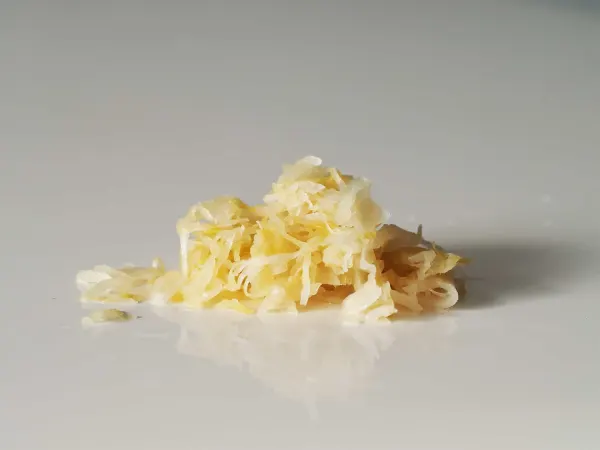Access our First Foods® Database in the Solid Starts App.
Learn moreSauerkraut
Vegetable
Age Suggestion
6 months
Iron-Rich
No
Common Allergen
No

When can babies eat sauerkraut?
Sauerkraut may be introduced in small amounts as soon as your baby is ready to start solids, which is generally around 6 months of age. While not a traditional first food in many cultures, sauerkraut is a great way to expose your child to sour flavors and work in some probiotics.
How do you prepare sauerkraut for babies with baby-led weaning?
Every baby develops on their own timeline, and the suggestions on how to cut or prepare particular foods are generalizations for a broad audience.
6 to 12 months old:
Rinse the cabbage in a colander to remove as much salt as possible. Cooked or fermented cabbage can be difficult for new eaters to chew, so try finely chopping sauerkraut before serving on its own or mixing into other foods, such as applesauce. As your baby becomes more skilled at chewing and swallowing, you can gradually serve larger pieces.
12 to 24 months old:
Try serving sauerkraut on its own, folded into grain dishes, or mixed with complementary fruits and vegetables, like diced apples, shredded carrots, or thinly sliced sweet peppers.
Get some inspiration for all those daycare lunches from our guide, 75 Lunches for Babies & Toddlers.
Videos
Is sauerkraut a common choking hazard for babies?
No. Sauerkraut is not a common choking hazard, but in theory, an individual can choke on any food, so always remain close to your baby during mealtimes. For more information, visit our section on gagging and choking and familiarize yourself with common choking hazards.
Does sauerkraut contain common allergens?
It’s possible, though unusual. Allergies to cabbage itself are extremely rare, though if babies are allergic or sensitive to mustard greens or mustard seed, they may be sensitive to sauerkraut. Be sure to read the labels when buying store-bought sauerkraut, as there are often many ingredients, from garlic to ginger and more!
As you would with any new food, introduce sauerkraut by offering a small quantity on its own for the first couple of servings. If there is no adverse reaction, gradually increase the quantity over future meals. And of course, if you have a family history of allergies, or suspect your baby may be allergic, consult an allergist before introducing sauerkraut.
Is sauerkraut healthy for babies?
Yes, in small amounts. Sauerkraut is packed with vitamins B, C, and K—essential nutrients to power many functions within your baby’s developing body—but is also very high in sodium, which you want to limit in your baby’s diet.
Because sauerkraut is fermented, it offers essential bacteria (probiotics) that helps to diversify your baby’s gut microbiome, where the majority of the immune system originates. Since babies are born with microbiome DNA—but not the bacteria themselves—it’s important to help cultivate friendly flora in their gastrointestinal tracts.
When shopping for sauerkraut for your baby, look for sauerkraut brands that are refrigerated and fermented with salt. Canned sauerkraut, while perfectly acceptable, tends to lack probiotics, which are lost in the heat-processing of the product.
★Tip: Keep sauerkraut refrigerated to extend its shelf life and minimize the risk of bacterial growth.
Background and origins of sauerkraut
Sauerkraut is a German word that translates to “sour cabbage” in English and hints at the preparation method. To make sauerkraut, thinly sliced cabbage is mixed with salt and flavorings and left to ferment. Over time, the cabbage develops a funky, savory crunch and lots of probiotics (healthy bacteria) to power our body’s functions.
Salting foods is an ancient preservation method with origins in the Middle East but that has been widely used in cultures around the world for centuries. In fact, while its name has ties to Germany, sauerkraut is made in countries throughout Europe and is a close cousin of kimchi, the popular fermented vegetable dish with Korean origins. In many European cultures, sauerkraut is an everyday staple at breakfast, lunch, and dinner—just like kimchi in Korean households.
Written and reviewed by these specialists
Expert Tips Delivered to Your Inbox
Sign up for weekly tips, recipes and more!
Copyright © 2025 • Solid Starts Inc

